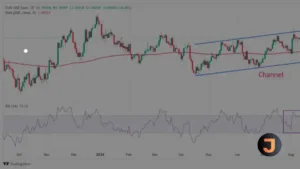Deciphering ETF Investment Strategies
The investment landscape is continually evolving, and Exchange-Traded Funds (ETFs) stand at the forefront of this transformation. Vortex Momentum, a beacon in investment education, sheds light on the nuanced approaches within ETF investment strategies. These strategies range from passive to active management, each offering a unique avenue for investors to achieve their financial objectives.
Passive vs. Active ETF Strategies
Passive ETF strategies are designed to mirror the performance of a benchmark index, such as the S&P 500, by maintaining a portfolio identical to that of the index. This approach is characterized by lower transaction costs and management fees, making it an attractive option for investors seeking cost-effective market exposure. Conversely, active ETF strategies are marked by a hands-on approach where fund managers actively trade securities to surpass market returns. This method hinges on in-depth research and market acumen but also introduces higher fees and a greater degree of risk.
Investors often weigh their choices between passive and active ETFs based on their confidence in market efficiency, risk appetite, and investment goals. While passive strategies resonate with those subscribing to the efficient market hypothesis, active strategies cater to those who trust in the ability of fund managers to secure above-average returns.
Long-Term vs. Short-Term Investment Strategies
When it comes to investment duration, long-term strategies involve holding onto securities for years, capitalizing on fundamental analysis and the power of compounding returns. In contrast, short-term strategies focus on rapid trades based on technical analysis with the aim of profiting from quick market shifts. The choice between these temporal strategies should align with an investor’s risk profile and financial aspirations.
Sector-Specific ETF Strategies
Sector-specific ETFs allow investors to concentrate their funds within certain segments of the economy, such as technology or healthcare. These targeted investments enable investors to capitalize on sector growth while providing a buffer against the risks of single-stock investments. However, investors must be wary of sector concentration risks and ensure that their portfolios are diversified across various sectors and asset classes for enhanced stability.
Ultimately, whether one opts for passive or active management, long-term or short-term focus, or sector-specific investments, understanding these diverse ETF strategies is crucial in curating a portfolio that reflects one’s financial vision.






